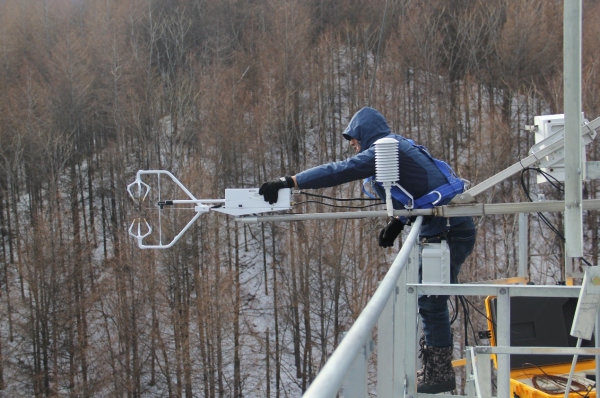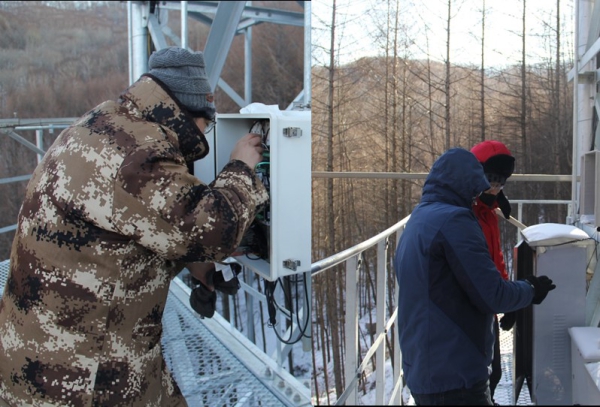On December 6, 2019, the first application of the heated 3-D Sonic Anemometer with smart electronics (CSAT3AH, Campbell Scientific, UT, USA) integrated into a closed-path eddy-covariance system (CPEC310, Campbell Scientific, UT, USA) started to operate at the Qingyuan Forest Ecosystem Observation and Research Station of the Chinese Academy of Sciences (referred to as Qingyuan Station).
Supported by the Ker Joint Laboratory of Research and Development for Monitoring Forest Fluxes of Trace Gas and Isotope Elements (founded by the Institute of Applied Ecology of the Chinese Academy of Sciences and Campbell Scientific Inc.), the instrument was properly installed. Its measurement data was calibrated on the spot and sent back in real time.
The 3-D sonic anemometers uses eddy-covariance technology to quickly measure the 3-D wind speed and ultrasonic temperature in the process of material and energy exchange between ecosystems and atmosphere. It is one of the core sensors in eddy-covariance systems. However, the low temperature in winter can cause the instrument to be covered with ice, snow or frost, interfere with the measurement path, and lead to inaccurate measurements. It has been a goal pursued by eddy-flux engineers to perform stable and accurate measurement under this environmental condition.
The CSAT3AH that has built-in heaters and electronics can automatically regulate the heating time, quantity and position (the sensors or the arms) according to its measurements of air temperature and humidity, and thus can ensure high-quality data collection.
In addition, the low temperature in winter may shorten (thermal expansion and contraction) the distance between ultrasonic probes, overestimate wind speed and ultrasonic temperature, and affect the final calculation result of eddy-flux. To quantify this error, the CSAT3AH-CPEC310 system and the CSAT3A-(non-heated 3-D ultrasonic anemometer) CPEC310 system were installed on the same side and at the same height of the observation tower. After a winter- and a spring-operation, the system will provide real data to assess the operating state of the CSAT3AH as well as the measurement error of non-heated 3-D ultrasonic anemometer in cold climate conditions.


